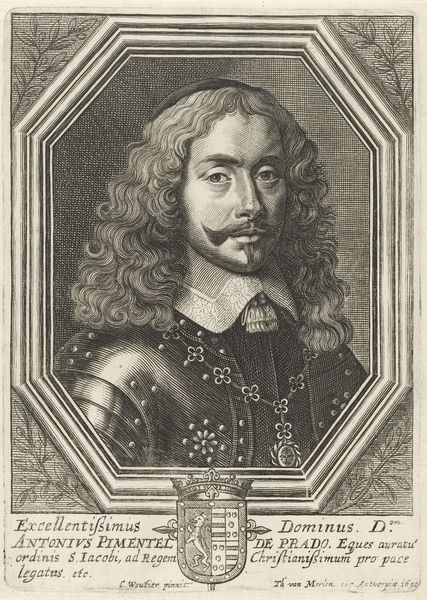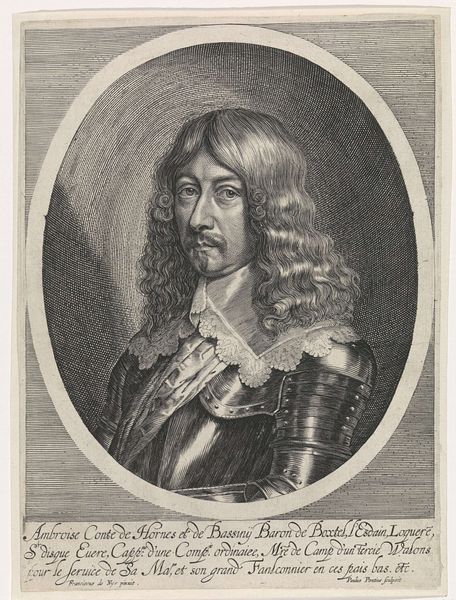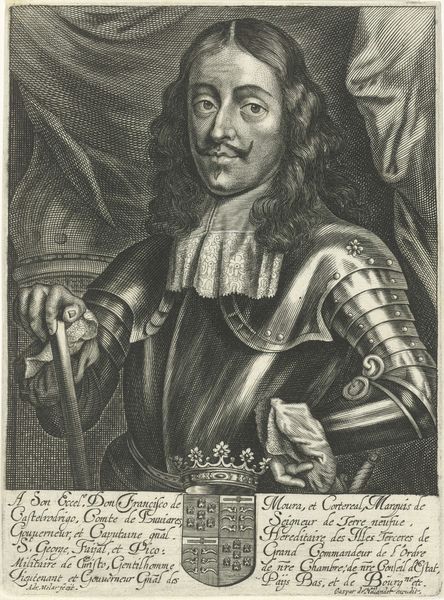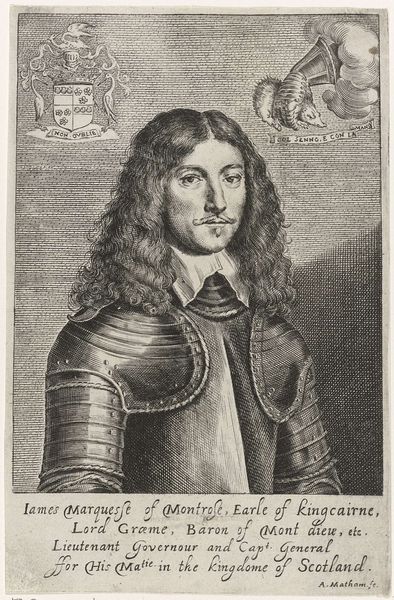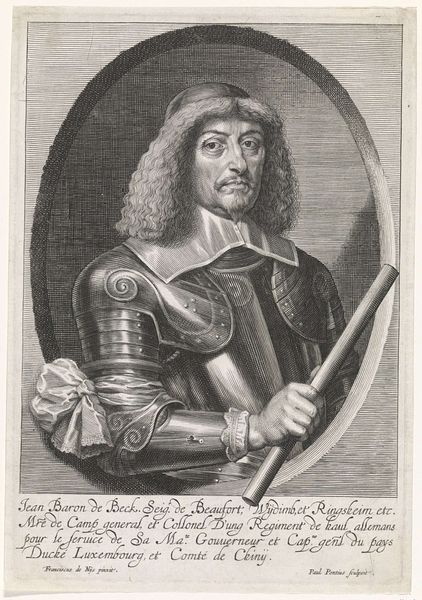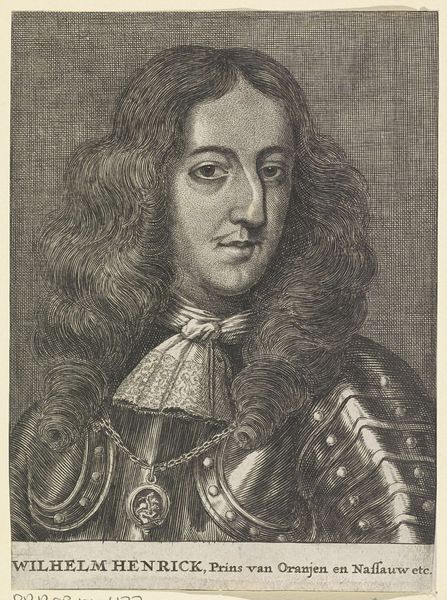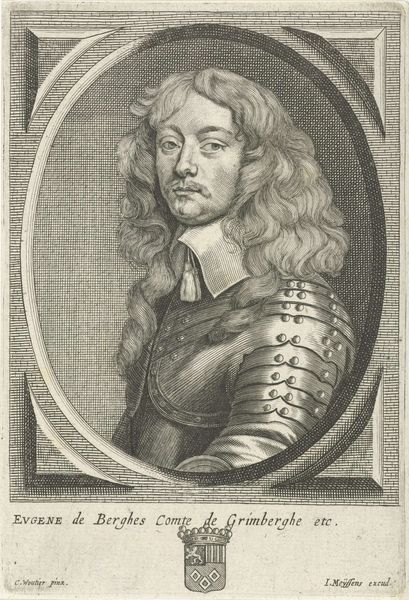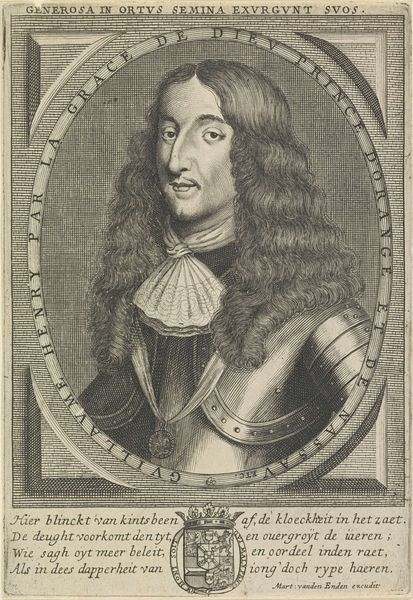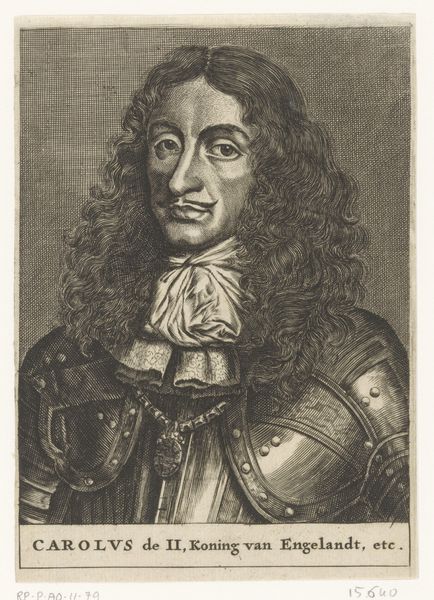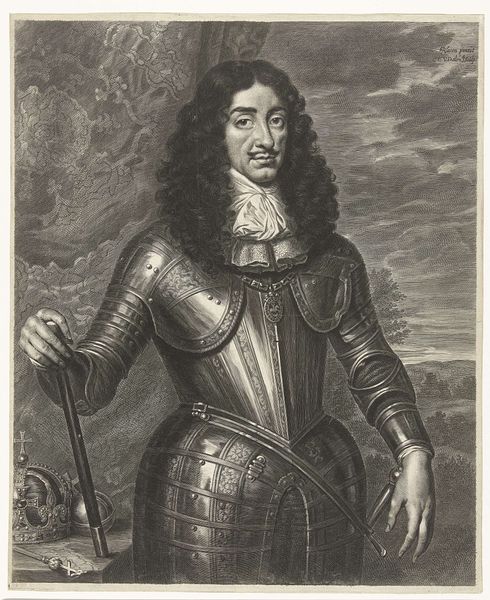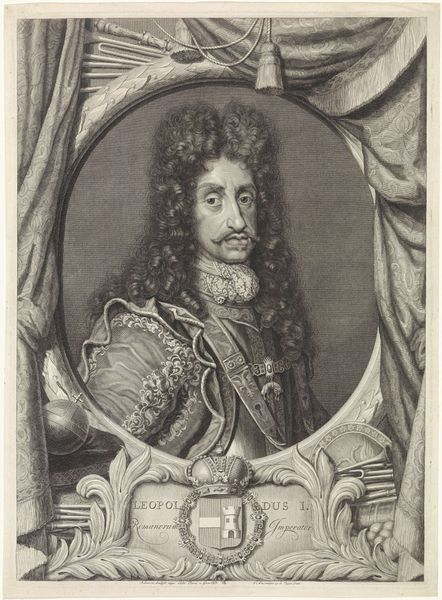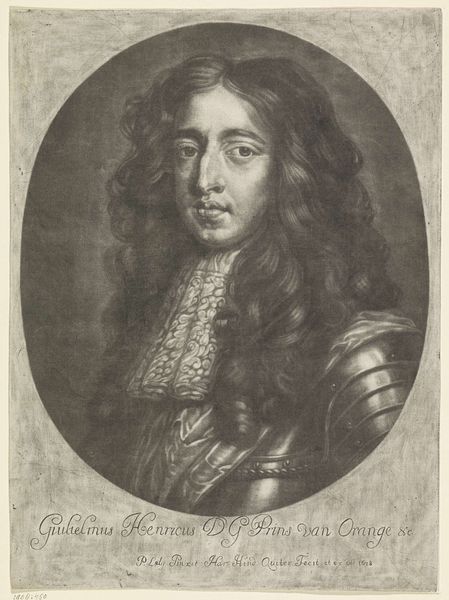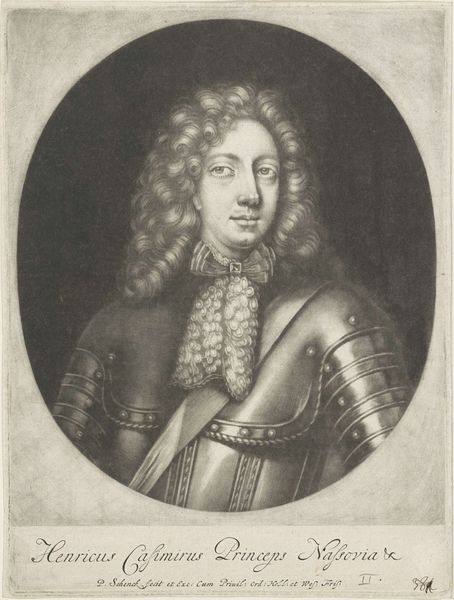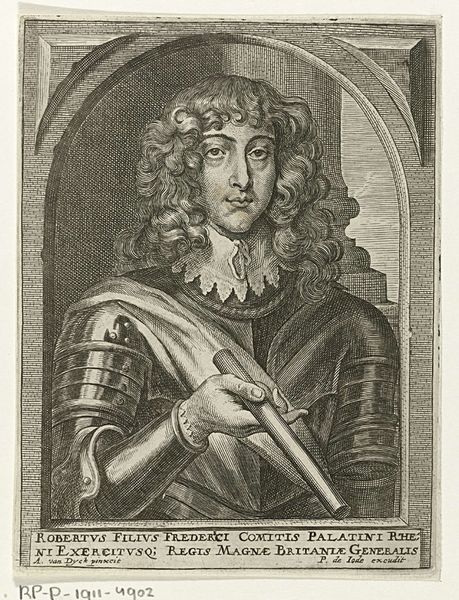
metal, engraving
#
portrait
#
baroque
#
metal
#
old engraving style
#
portrait reference
#
history-painting
#
engraving
Dimensions: height 174 mm, width 119 mm
Copyright: Rijks Museum: Open Domain
Editor: Here we have Pieter de Jode the Younger’s engraving, "Portret van Claude de Richardot," dating somewhere between 1628 and 1670. The detail is incredible; you can almost feel the weight of his armor. How do you interpret this work within its historical context? Curator: This portrait exists not in isolation but as a reflection of power, status, and religious tensions during a period of significant upheaval. The sitter's armor isn’t merely decorative; it speaks to a militarized society, a time when religious conflict shaped social and political identities. Who was Richardot, and what role did he play in the dynamics of his time? How does this portrayal reinforce or challenge societal norms and expectations associated with gender and leadership? Editor: The inscription mentions he was a war advisor and Catholic, suggesting a position of influence. But the artistic style... it seems to glorify him? Curator: Exactly. Baroque portraiture was often used as a tool of propaganda, solidifying the image and authority of powerful figures. De Jode, by choosing engraving, a medium allowing for widespread reproduction, amplified Richardot's presence. We might also consider: what visual cues, like the pose, contribute to this sense of authority, and what impact does the black and white aesthetic have on our interpretation? It makes him imposing and severe, perhaps even inflexible. Editor: So it's less about individual personality and more about conveying a message of power. That makes a lot of sense. Curator: Precisely. Art doesn’t exist in a vacuum. Analyzing the socio-political climate unveils hidden meanings, prompting us to consider whose voices were amplified and whose were silenced through artistic representation. I think understanding how this piece relates to broader themes helps me engage with it beyond just appreciating it formally. Editor: I agree, seeing it as a cultural artifact really does enrich the viewing experience. Curator: Absolutely! Now, let's move on to another piece that explores similar power dynamics from a different angle.
Comments
No comments
Be the first to comment and join the conversation on the ultimate creative platform.
